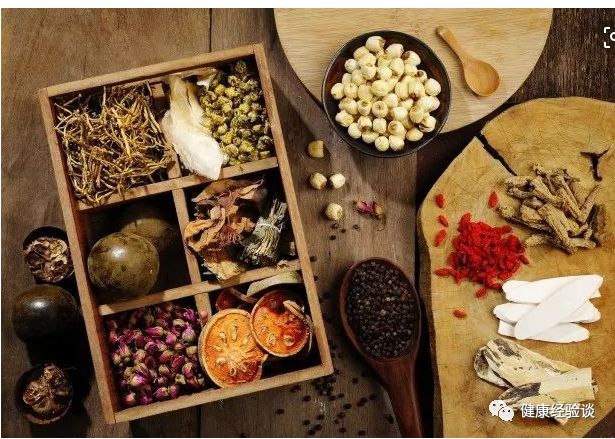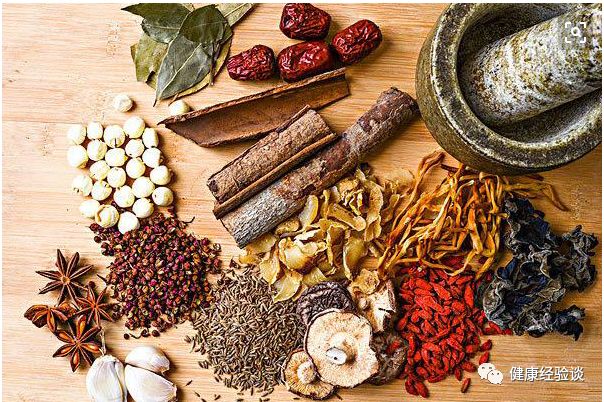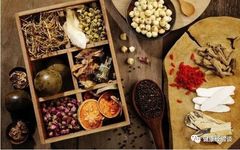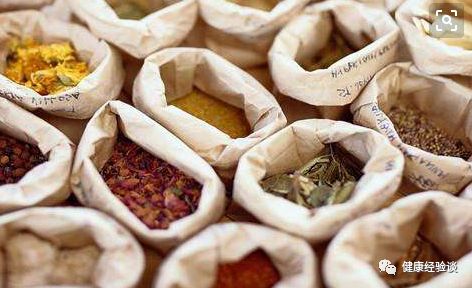Spleen and Stomach Yang Deficiency with Cold is a term in Traditional Chinese Medicine (TCM) that refers to the deficiency of Yang Qi in the spleen and stomach, leading to an excess of coldness. This condition includes both Spleen Yang Deficiency and Stomach Yang Deficiency (some consider it solely as Spleen Yang Deficiency). It is often caused by dietary irregularities, excessive consumption of cold foods, overexertion, prolonged illness, or emotional stress damaging the spleen. Symptoms of Spleen Yang Deficiency may include poor appetite, abdominal distension, abdominal pain that is relieved by warmth and pressure, a pale and moist tongue, and a weak pulse.
Stomach Yang Deficiency is often triggered by cold weather or the consumption of cold foods, resulting in pain that is accompanied by a sensation of cold in the stomach, which is alleviated by warmth. The pain is often dull and persistent, worsened when fasting, and may improve with food. Symptoms may include vomiting clear fluids, fatigue, cold extremities, loose stools, a pale tongue with a white coating, and a weak pulse. The differentiation of Stomach Yang Deficiency is characterized by symptoms of disharmony in the stomach and Yang deficiency.
Methods/Steps
-
Etiology
The primary cause of Spleen and Stomach Yang Deficiency with Cold is poor dietary habits, such as irregular eating patterns and frequent consumption of cold or raw foods, compounded by a fast-paced lifestyle and high stress, which can lead to stomach diseases. This condition may also develop from Spleen and Stomach Qi Deficiency.
According to the “Jisheng Fang – Treatise on Spleen and Stomach Yang Deficiency with Cold”: “The spleen is the foot Taiyin meridian, located in the center, belonging to the earth element, and governs the muscles and flesh. It is paired with the foot Yangming stomach meridian. When the exterior and interior are warm, food is easily digested and transformed. If dietary habits are irregular, or if one is harmed by cold, or if excessive thinking disrupts the balance, cold and heat will manifest. When there is deficiency, it leads to cold, resulting in cold extremities, poor appetite, belching with sourness, or vomiting after eating, abdominal pain with borborygmi, occasional diarrhea, heavy limbs, excessive thinking, aversion to noise, and dreams of insufficient food. A pulse that is deep, thin, and weak indicates a cold deficiency condition.”
In summary, the main causes of Spleen and Stomach Yang Deficiency with Cold are: 1) development from Spleen and Stomach Qi Deficiency; 2) excessive consumption of cold foods damaging Spleen and Stomach Yang.
-
Clinical Manifestations
Symptoms include dull, persistent abdominal pain, discomfort from cold, preference for warmth and pressure, severe pain when fasting, relief after eating, and exacerbation of pain after fatigue or consuming cold foods. Other symptoms may include vomiting clear fluids, reduced appetite, fatigue, cold extremities, loose stools, a pale tongue with a white coating, and a weak pulse.
When Spleen Yang Deficiency is predominant, symptoms may include abdominal distension with reduced appetite, relief of abdominal fullness with warmth, preference for warmth and pressure, vomiting clear fluids, loose stools, cold extremities, heaviness in the limbs, or generalized edema, difficulty urinating, or excessive clear vaginal discharge, with a pale, swollen tongue, white slippery coating, and a deep, slow, weak pulse.
The key points for differentiation in Spleen and Stomach Yang Deficiency with Cold are the loss of healthy function in the spleen and the manifestation of cold symptoms. Insufficient Yang leads to poor transformation and digestion, resulting in abdominal distension and reduced appetite; excess cold leads to stagnation and pain, hence the preference for warmth and pressure; internal coldness prevents the transformation of fluids, leading to symptoms such as vomiting clear fluids, loose stools, and even undigested food. Women may experience excessive clear discharge and lower abdominal heaviness, indicating cold dampness.
-
Differentiation and Treatment
The treatment principle is to warm the middle and strengthen the spleen, with the representative formula being Li Zhong Tang (Regulate the Middle Decoction). However, in many TCM texts, conditions such as Xiao Jian Zhong Tang (Minor Construct the Middle Decoction), Li Zhong Tang, Xiang Sha Liu Jun Zi Tang (Aromatic Sand Six Gentlemen Decoction), and Xiang Sha Yang Wei Wan (Aromatic Sand Stomach Nourishing Pill) are collectively referred to as Spleen and Stomach Yang Deficiency with Cold (Middle Jiao Yang Deficiency). Although these four formulas are similar, they exhibit subtle differences that should not be overlooked.
Xiang Sha Liu Jun Zi Tang is characterized by Qi deficiency, where insufficient Qi leads to mild cold, along with phlegm dampness and Qi stagnation, with pain relieved by light pressure and worsened by heavy pressure, abdominal distension, belching, and loose stools. The key point for differentiation is that abdominal distension is more pronounced than pain.
Li Zhong Tang addresses the lack of central Yang combined with cold dampness, with symptoms including pain relieved by light pressure, aversion to cold, preference for warm foods, and severe pain when exposed to cold, with abdominal pain being more severe than distension as the key point for differentiation.
Xiao Jian Zhong Tang is for central Yang deficiency combined with weak Yin (i.e., both Yin and Yang deficiency), with symptoms including pain relieved by heavy pressure, slight dryness of the mouth, normal or slightly dry stools, and a combination of hot and cold sensations in the extremities, with the key point for differentiation being pain relieved by heavy pressure.
These formulas all treat Spleen and Stomach Yang Deficiency with Cold, but they should not be confused in clinical practice. For those with both Yin and Yang deficiency, Xiao Jian Zhong Tang is used as a warming and nourishing method (with Huang Qi Jian Zhong Tang and Dang Gui Jian Zhong Tang also belonging to this category); Li Zhong Tang and its derivatives (such as Fu Zi Li Zhong and Gui Fu Li Zhong) are the representative formulas, and using Li Zhong Tang inappropriately for Xiao Jian Zhong Tang may lead to excessive warming and damage to Yin; conversely, using Xiao Jian Zhong Tang when Li Zhong Tang is indicated may lead to excessive moisture retention. Similarly, using Li Zhong Tang for Xiang Sha Yang Wei Wan may fail to strengthen the spleen, eliminate dampness, harmonize the stomach, and resolve fullness. Clinical differentiation is essential to ensure the correct application of formulas, allowing for the harmonious combination of herbs and symptoms to achieve the goal of warming the middle, dispelling cold, and nourishing the spleen and stomach.
-

-
Clinical Recipes
1. Gao Liang Jiang (Galangal) and Jing Mi (Glutinous Rice)
First, use Gao Liang Jiang with an appropriate amount of water to decoct the medicinal juice in a clay pot; then use the juice to cook porridge with Jing Mi, and consume on an empty stomach once a day for 3-7 days. This is suitable for cold-induced stomach pain.
2. Ding Xiang (Clove), Rou Gui (Cinnamon), and Hong Tang (Brown Sugar)
Soak Ding Xiang and Rou Gui in warm water, boil with strong heat, then simmer for 20 minutes, strain the juice, and mix with Hong Tang, taking 5-10 ml three times a day. This is suitable for cold abdominal pain.
3. Xiao Hui Xiang (Fennel) and Hu Jiao (Pepper)
Grind both into fine powder, form into pills with wine, taking 3-6 grams with warm wine. This disperses cold, regulates Qi, and alleviates pain, suitable for cold stomach pain.
4. Pork Stomach (Dog Stomach is better), Jing Mi, Ding Xiang, Rou Gui, Xiao Hui Xiang
Put all the above ingredients into a pot, add some seasonings like ginger, scallions, salt, wine, and soy sauce, and simmer until very tender, then mix with Jing Mi to make porridge and consume on an empty stomach three times a day. This is suitable for stomach pain.
5. Carp, Sheng Jiang (Fresh Ginger), Ju Pi (Tangerine Peel), and Hu Jiao (Pepper)
Clean the carp, slice it; wash Sheng Jiang and slice it, then bundle it with Ju Pi and Hu Jiao in a cloth bag, stuff it into the fish, place it in a pot with an appropriate amount of water, and simmer until cooked, adding a little salt. Consume the soup and fish on an empty stomach twice a day. This is suitable for stomach pain after exposure to cold.
6. Hu Jiao (Pepper), Rou Gui (Cinnamon), Bai Zhu (White Atractylodes), Scallions, Pork Stomach, and Salt
Clean the pork stomach, mix the ingredients with an appropriate amount of salt, stuff them into the stomach, place in a clay pot, add water, boil with strong heat, then simmer until the stomach is tender. Consume the stomach and drink the soup, one small bowl each time, 2-3 times a day.
-
7. Bai He (Lily), Dan Shen (Salvia Root), Wu Yao (Lindera), Gao Liang Jiang (Galangal), Zhi Xiang Fu (Processed Cyperus), Tan Xiang (Sandalwood), and Sha Ren (Amomum)
Decoct in water, taking one dose daily. This famous formula by TCM practitioner Jiao Shude functions to regulate Qi, dispel cold, warm the middle, and harmonize the stomach, suitable for stomach pain.
8. Hu Jiao (Pepper), Rou Gui (Cinnamon), Bai Zhu (White Atractylodes), Scallions, Pork Stomach, and Salt
Clean the pork stomach, mix the ingredients with an appropriate amount of salt, stuff them into the stomach, place in a clay pot, add water, boil with strong heat, then simmer until the stomach is tender. Consume the stomach and drink the soup, one small bowl each time, 2-3 times a day.
9. Cao Guo (Tsaoko), Lamb, Da Mai Ren (Barley), and Salt
Wash the barley and cook it in water to make porridge; then boil the cleaned lamb and Cao Guo in water until the meat is cooked. Remove the lamb and Cao Guo, mix them into the barley porridge, and simmer until boiling, adding salt to taste. This formula warms the stomach and alleviates distension, suitable for stomach distension and pain due to Spleen and Stomach Yang Deficiency.
10. Bai Shao (White Peony), Gui Zhi (Cinnamon Twig), Gan Cao (Licorice), Sheng Jiang (Fresh Ginger), Da Zao (Jujube), and Mi Tang (Honey)
Decoct the first five ingredients, add honey, and dissolve over low heat, taking warm 2-3 times a day. This formula is suitable for abdominal pain due to Yang deficiency.
11. Fu Pian (Aconite), Lamb, Sheng Jiang (Fresh Ginger), Scallions, Hu Jiao (Pepper), and Salt
Wrap Fu Pian in cloth; clean the lamb, blanch it in boiling water with ginger and scallions until red, remove the bones, cut into cubes, and soak in clean water to remove impurities. In a clay pot, add water, ginger, scallions, Hu Jiao, lamb, lamb bones, and Fu Pian, boil for 30 minutes, then simmer until the lamb is tender (about 2-3 hours). Remove Fu Pian, serve the lamb with the broth. This formula warms the stomach and strengthens Yang, suitable for cold abdominal pain due to Spleen and Stomach Yang Deficiency.
12. Duck, Ding Xiang (Clove), Rou Gui (Cinnamon), and Cao Dou Kou (Cardamom)
Prepare ginger, scallions, salt, rock sugar, MSG, sesame oil, and marinade as needed. Clean the duck, remove feathers and entrails. Boil Ding Xiang, Rou Gui, and Cao Dou Kou in water twice, each time for 20 minutes, strain the juice. Add ginger and scallions, simmer the duck until 60% cooked, then cool. Marinate the duck in the broth, then simmer until fully cooked. This formula harmonizes the middle, warms the stomach, dispels cold, alleviates vomiting, and relieves pain, suitable for cold abdominal pain, vomiting, and diarrhea due to Spleen and Stomach Yang Deficiency.
-

-
Prevention
1. Dietary Therapy
(1) Pepper Pork Stomach Soup: Use pork stomach, pepper, and 5 honey dates. Clean the pork stomach, stuff it with pepper, sew it up, and boil with honey dates in water for 3 hours. This warms the middle, strengthens the spleen, dispels cold, and alleviates pain, suitable for cold stomach pain due to Spleen and Stomach Yang Deficiency.
(2) Fennel Dog Meat Soup: Use fennel, cinnamon, dried tangerine peel, Tsaoko, 2 slices of ginger, dog meat, and soy sauce. Clean and crush the spices, clean the dog meat, and stir-fry to remove the gamey taste. Boil all ingredients in water until the meat is tender. This warms the middle, supports Yang, and is suitable for cold stomach pain.
(3) Ginger Porridge: Slice fresh ginger, add 2-5 jujubes, and cook with glutinous rice. This warms the spleen, nourishes the stomach, dispels wind, and alleviates cold symptoms, suitable for elderly or post-illness patients with Spleen and Stomach Yang Deficiency.
(4) Stomach Strips Soup: Clean beef or pork stomach, boil briefly, then simmer until tender, adding salt, cooking wine, Sichuan pepper, and fennel. Serve hot.
(5) Fennel Vegetable Buns: Mix chopped fennel with minced chicken, season, and steam.
-
(6) Dry Ginger Honey Glutinous Rice Drink: Grind dry ginger and glutinous rice, boil with water, and mix with honey. This warms the stomach and alleviates vomiting.
(7) Ginger Milk Drink: Prepare fresh ginger juice and mix with milk, boil. This nourishes the spleen and stomach.
(8) Other Recipes: Include various ginger and rice dishes, lamb with tofu, and other warming foods.
2. Dietary Considerations
(1) Favor warm, sweet, and spicy foods that strengthen the spleen and warm the stomach, such as rice, lamb, chicken, pork stomach, and various spices.
(2) Avoid cold and raw foods that can damage Yang Qi, such as buckwheat, mung beans, tofu, and various fruits and vegetables that are cooling in nature.
3. Foot Therapy
Foot therapy is a common health maintenance method, and acupressure can be effective for stomach issues.
(1) Solar Plexus: Located on the sole, massage upwards.
(2) Stomach Point: Located under the first joint of the big toe, massage according to foot differences.
(3) Adrenal Gland: Located in the deepest part of the foot, massage gently.
(4) Pancreas: Located on the inner side of the foot, massage gently.
(5) Duodenum: Located between the pancreas and bladder reflex areas, massage gently.
(6) Liver and Gallbladder: Located on the upper half of the foot, massage upwards.
(7) Chest Lymph Nodes: Located between the big toe and second toe, massage towards the heel.
(8) Upper Body Lymph Nodes: Located above the ankle, massage inwards.
Precautions
-
Spleen and Stomach Yang Deficiency can also develop from Spleen and Stomach Qi Deficiency.
-
Women may experience excessive clear discharge and lower abdominal heaviness, indicating cold dampness.
Previous Highlights


